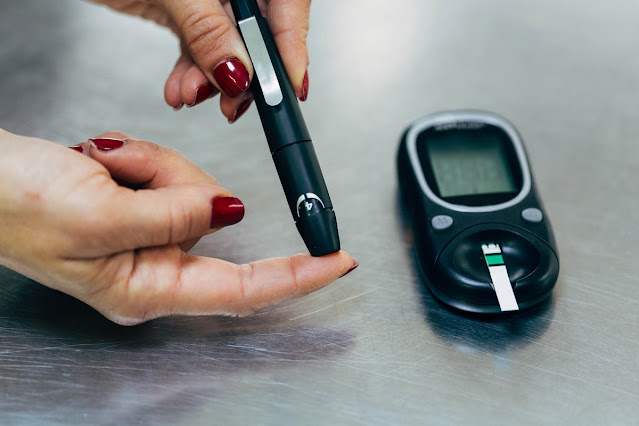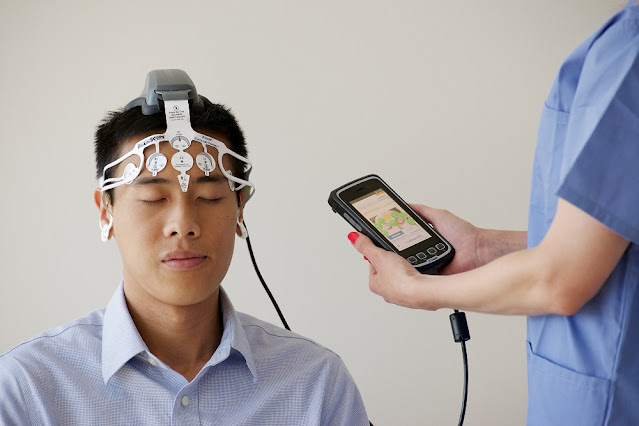Blood Glucose Monitoring: Tracking Your Health from Home
Blood glucose monitoring is a crucial part of diabetes
management. For people with diabetes, keeping tabs on blood sugar levels helps
them understand how foods, medications, exercise and other lifestyle factors
impact blood sugar. It also alerts them to potential health issues like
hypoglycemia or hyperglycemia. With advances in monitoring technology, checking
blood glucose is easier than ever and can be done from the comfort of home.
Understanding Blood Glucose and Diabetes
Before looking at how to monitor blood glucose levels, it's important to
understand a bit about diabetes and blood sugar. Our bodies convert
carbohydrates from food into glucose (sugar), which is then released into the
bloodstream. The hormone insulin is needed to help glucose enter our cells for
energy. In diabetes, either the body does not produce enough insulin or cells
do not respond properly to insulin. This prevents glucose from being absorbed
by cells, causing high blood sugar levels.
There are two main types of diabetes - type 1 and type 2. Type 1 diabetes is an
autoimmune disease where the body's own immune system destroys the cells in the
pancreas that produce insulin. People with type 1 diabetes must take artificial
insulin daily to survive. Type 2 diabetes develops when the body becomes
resistant to insulin or does not produce enough insulin to maintain normal
blood glucose levels. It is associated with excess weight and physical
inactivity.
Monitoring Methods and Devices
Traditional blood glucose monitoring involves pricking your finger to draw a
small drop of blood, which is then applied to a test strip that is inserted
into a glucose meter. The meter uses an electrochemical reaction to measure the
level of glucose in the blood sample.
Today, there are continuous glucose monitors that don't require finger pricks.
A small flexible sensor inserted under the skin continuously measures glucose
levels in interstitial fluid just under the skin. The sensor transmits readings
wirelessly to a transmitter or receiver device. Some monitors can also connect
to insulin pumps to help automatically adjust insulin delivery.
Monitoring at Home
Home blood glucose monitoring allows diabetes patients to easily check their
levels whenever needed, such as before and after meals, before exercise, before
bed and any time hypoglycemia or hyperglycemia is suspected. The American
Diabetes Association (ADA) recommends:
- People with type 1 diabetes should check blood glucose levels at least 4
times per day.
- People with type 2 diabetes taking insulin or medications that increase risk
of hypoglycemia should check at least 4 times per day.
- Others with type 2 diabetes should discuss testing frequency with their
healthcare provider.
Checking Blood
Glucose Monitoring at set times each day and keeping a log of results
helps people adjust medications, meals and activities based on patterns. It
also provides critical data for Doctor visits. With the growing popularity of
continuous glucose monitors, an increasing number of people are now able to
remotely monitor glucose readings from work or on the go using receiver devices
or smartphones.
Interpreting Blood Glucose Readings
To properly manage diabetes, one must understand normal vs abnormal blood
glucose test results:
Hypoglycemia: Low blood glucose under 70 mg/dL requires immediate treatment,
usually with fast-acting carbohydrates. Severe hypoglycemia under 54 mg/dL
requires assistance from others.
Normal range: 70-130 mg/dL before meals; less than 180 mg/dL after meals.
Pre-diabetes: 100-125 mg/dL before meals may indicate pre-diabetes or insulin
resistance.
Hyperglycemia: High blood glucose over 180 mg/dL before meals or over 200 mg/dL
after meals require medication or lifestyle adjustments. Consistently high
readings over 240 mg/dL require medical attention.
Goals should be tailored for each individual based on age, type of diabetes and
other health conditions. Regular monitoring provides valuable context for
discussing treatment plans with physicians. More advanced technologies like
continuous glucose monitors now make hyper/hypoglycemia alerts a possibility
too.
Factors Affecting Readings
Blood glucose levels fluctuate based on food intake, medication usage, illness,
stress and physical activity. Certain factors can distort readings, so patients
should be aware of potential inaccuracies:
- Fingerstick location - fingertips yield most accurate results; avoids fingers
with calluses, cuts or poor circulation.
- Stress, illness or dehydration - may temporarily increase blood glucose
independent of food.
- too much pressure on lancing device - squeezes out interstitial fluid and not
pure blood sample.
- improper handling of test strips or meters - exposure to humidity, dirt or
code strips could give errors. Regular quality control tests are recommended.
With experience tracking different scenarios, diabetes patients gain a better
understanding of how to prevent and manage fluctuations in blood glucose levels
through lifestyle modifications like carb counting and insulin dosing
adjustments. Technology aids, but active self-management remains the key to
success.
Making Monitoring Part of Daily Routine
No matter the method, blood glucose monitoring needs to become second nature
for those with diabetes. Some helpful habits include:
- Keeping a log/diary of readings, food, activity and medications
- Testing at regular times each day
- Having supplies like strips, batteries, lancets readily accessible
- Setting reminders on devices or calendar
- Reviewing patterns with care providers regularly
- Discussing goals and any issues with managing readings
With consistent, diligent monitoring, diabetes patients gain better control
over their condition and reduce health risks like kidney problems, nerve
damage, eye disease and cardiovascular complications over the long run. Those
who struggle with adherence should not hesitate to reconnect with their care
team for extra education or support. Daily blood glucose testing plays a vital
role in successful diabetes self-management.
Get
more insights on- Blood
Glucose Monitoring
Check more
trending articles related to this topic: Compressor




Comments
Post a Comment